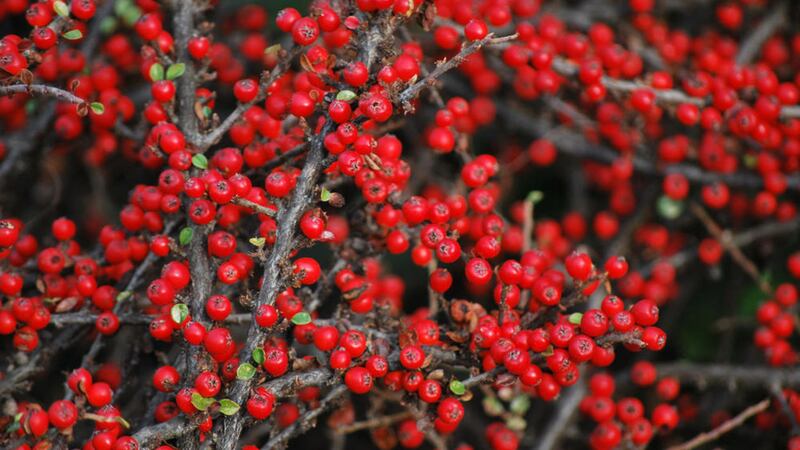TO SOMEWHAT state the obvious, the autumn garden tends not to be as spectacular as its seasonal predecessor and therefore relies more on
colourful foliage and texture, rather than bright, ostentatious blooms.
This is why many gardeners tend not to put too much effort into their
displays at this time of year, preferring to focus on preparation for the following spring and summer.
That's a shame, because the autumn sunlight, of which we’ve had our fair share in recent weeks, is great for showcasing the variety of plants which come into their own as the nights grow longer.
Berries in particular look splendid and this year, thanks to a reasonable summer, the likes of rowan, hawthorn and burberis appear to have produced a bumper crop.
Not only do berries provide eye-catching colour in the garden but they are also an important source of food for the wild bird population. Native and naturalised species are best for enticing birds into the garden with red and orange berries proving the biggest hit.
One berry-bearing shrub which looks dazzling at the moment is cotoneaster (pronounced ka-toni-aster), which isn’t at all fussy about where it grows and will readily earn its keep.
A member of the rose family, cotoneasters come in evergreen, semi-evergreen and deciduous varieties. The genus features more than 200 species covering a variety of growing habits.
It’s this range in appearance which makes cotoneaster so popular, as they can be used in a shrub border, as hedging or screening, or as wall and ground cover.
The cotoneaster bursts into life in late spring with a profusion of white or pale-pink, flat-petalled flowers, which bees find irresistible. But it’s in the autumn when their numerous bright, long-lasting, berries glow in the sunlight that they are most noticeable.
Cotoneasters are fully hardy, although they are inclined to suffer if exposed to cold easterly winds. They require little pruning, but can withstand being cut back hard if they become too overwhelming. They will flourish in even the poorest soil as long as the site is dry.
The deciduous varieties prefer a full sun position, while the semi-evergreens and evergreens do well in sun or partial shade.
Popular varieties include Cotoneaster lacteus, C. dammeri and C. frigidus ‘Cornubia’. Cotoneaster lacteus is an evergreen with veined, elliptical leaves which are dark green above and white underneath.
Growing up to four metres, it has arching, free-flowing branches and sports creamy-white flowers and red fruits.
Cotoneaster dammeri is also evergreen, but has a prostrate habit which makes it ideal for ground cover in rockeries and shady areas. Again with
white flowers and red berries, it will reach less than one foot in height, but will cover an area of up to four square metres.
Cotoneaster frigidus Cornubia' is a deciduous variety which loses its long narrow leaves in winter. Upright when young, it matures into an arching mass of branches and berries.
One word of caution, however: small-leaved cotoneaster, also called rockspray or entire-leaved cotoneaster, is a once-common garden shrub
which has now become naturalised and established in many wild situations across Ireland.
So much so, in fact, that it’s listed as an invasive alien on both sides of the border. A prostrate evergreen with white flowers and bright red berries, small-leaved cotoneaster has relocated from the Himalayas with frightening success.
It is particularly rampant at Garron Head in Co Antrim and Belmore Mountain in County Fermanagh.
The shrub doesn’t pose any direct threat to native species, though its low-growing habit shades out other vegetation and is reducing habitats for native wild orchids.









